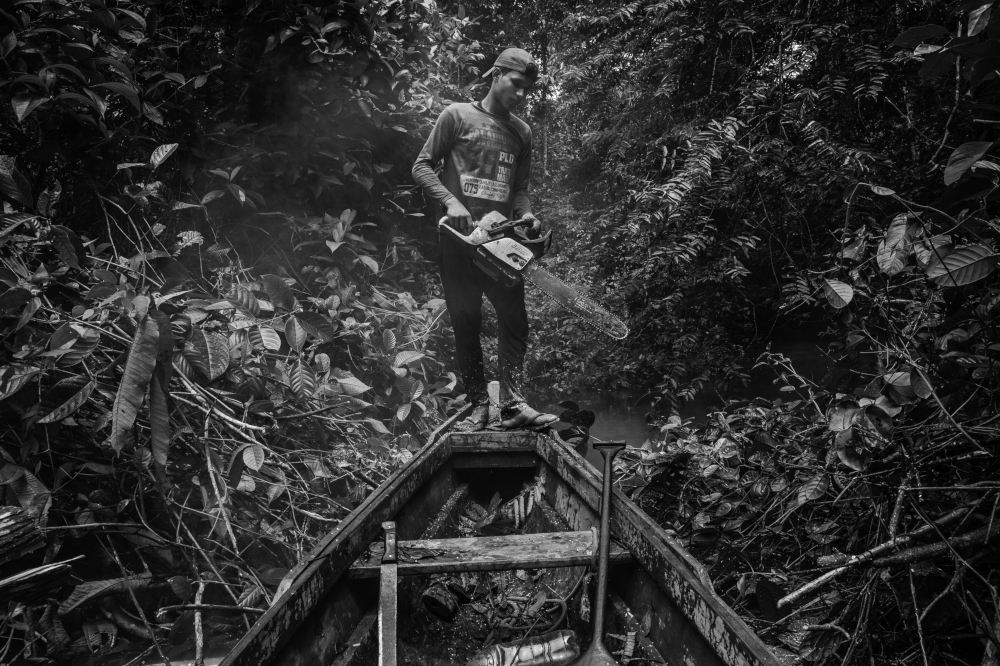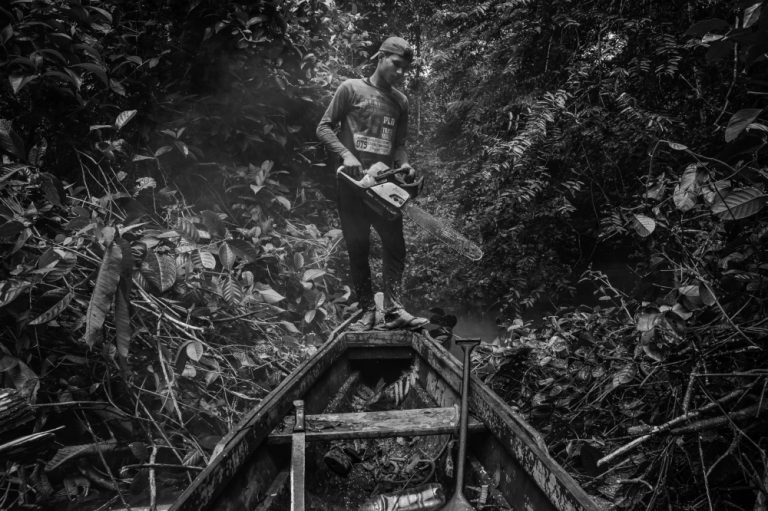
For 28 years Lalo de Almeida has produced photography and video for the Brazilian newspaper Folha de S. Paulo while also reporting for The New York Times. For more than 10 years Lalo has documented the devastation and massacres that take place in the Amazon, a vast region the size of a continent that is diverse in its population and places, with vast cities like Manaus and Belém, indigenous and non-indigenous peoples, intersecting in a complex cultural and environmental melting pot.
Lalo studied photography at the Instituto Europeo di Design in Milan, Italy, and has developed a number of award-winning photography projects. Lalo’s series “Amazon Dystopia” received the Eugene Smith Grant in Humanistic Photography in 2021 and in 2022 he won the World Press Photo Long-Term Project Award.
In my conversation with Lalo, we speak about the purpose and challenges he faced in developing “Amazon Dystopia.”
The conversation begins with the latest disturbing event in the Vale do Javari region: the murder of indigenist Bruno Pereira and British journalist Dom Phillips. Lalo met Pereira and Phillips in 2021: “we did a report on the increasingly ostensible presence of evangelical missionaries in the region, who are trying to enter the indigenous land”, he says.
Vale do Javari is the second largest indigenous land in Brazil and is home to the largest population of isolated indigenous people in the world. “It’s a super complex region. In addition to having all the problems common to the Amazon, such as pressure from mining and deforestation, even though it is an area that is still well preserved, this indigenous land is in a border region. In other words, there is also the issue of drug trafficking”, explains Lalo, noting that the situation in the forest is far from simple and that superficial opinions end up doing a disservice to understanding.
Threats to people on the front lines of the Amazon are not a recent problem. “In the history of the Amazon, you see Sister Dorothy Stang, who was murdered years ago [2005], Chico Mendes much longer ago [1988]… What happened to Bruno and Dom is the result of a predatory occupation process. All occupation policies are always thinking about how to extract the most without leaving anything for the local populations. And you can see that, despite so many resources, it is still a very poor region…which facilitates criminal activities”, says Lalo.
Lalo is clear that while the Bolsonaro government did not create the problem of deforestation it has made the situation worse. In Lalo’s view, state institutions in the regions, such as Ibama and Funai, which were the counterweight to this model of criminal occupation, have been weakened. Lalo blames Bolsonaro’s statements for empowering people who were already committing crimes in the region. “The villains who are carrying out land grabbing, illegal logging, mining in indigenous lands, and invading public lands have come to be seen as those who bring development. With that, these people felt free to do whatever they wanted”, Lalo says.
Lalo believes that Brazil continues to treat the Amazon as a colony, a historical process that has been repeated since the Portuguese invasion. He emphasizes that everything needs to be rethought since many economic activities in cities in the Amazon are illegal. But if there are no income alternatives for these people they will continue to commit crimes in order to survive.
“Amazon Dystopia”, being more than a denunciation, shows the many layers of complexity in the Amazon.
“I also [originally] had a superficial view of the region. In 2009, at the time of the public hearing of the [Hydroelectric Power Plant] Belo Monte, in the heart of the Amazon, the Xingu River, I went to Altamira. I thought about the impact it would cause, and I drew a parallel with the Transamazônica highway in the 70s and other major occupation works in the region. A process that was repeating itself and that I wanted to follow closely. For ten years I watched the transformation of Altamira, which after a while became the most violent city in Brazil. I want to bring more questions and not answers. Fewer certainties and more doubts, because that’s what happens the more you know the Amazon”, reveals Lalo.
We can see some of this complexity when Lalo comments on his photos taken over the years. In addition to recording the beginning of Belo Monte – the largest and most expensive Brazilian hydroelectric dam, a vast project with unprecedented impacts on the Amazon – he also documented indigenous peoples who carry out large-scale agriculture within their own land. Then there are other ethnicities, who stay on the side of the road asking for soda and snacks, as well as those who work on sustainable extraction of Cumaru, the Amazonian vanilla, for the cosmetics industry. These are perspectives that go beyond what is already known, such as poorly demarcated reserves and river pollution due to mining.
In the conversation, Lalo emphasizes that indigenous peoples have been fighting for 500 years and have already faced many challenges. He also argues that the contemporary abandonment of indigenous people as, ironically, ended up having on positive effect. “The curious thing was that all this made them react. I see them stronger today, more combative, more organized, and more connected. I see self-management of the territory and the strengthening of social relations. I look at the question of indigenous people with hope. They are the light at the end of the Amazon tunnel, the people who are there, in the fight”, he argues.
Lalo does not like the paternalistic and “colonizing” behavior of non-indigenous people, who do not know the situation in detail. There are no easy answers, but there is a better way to operate, and it is from the inside out, based on what local populations want. “Most big projects don’t think like that. Deforestation is moving at an industrial speed and sustainable alternatives are moving at an artisanal speed. It’s distressing. That’s why my work isn’t done. It’s a life’s work”, says Lalo.
Watch Lalo de Almeida’s complete conversation with Leonardo Carrato.
